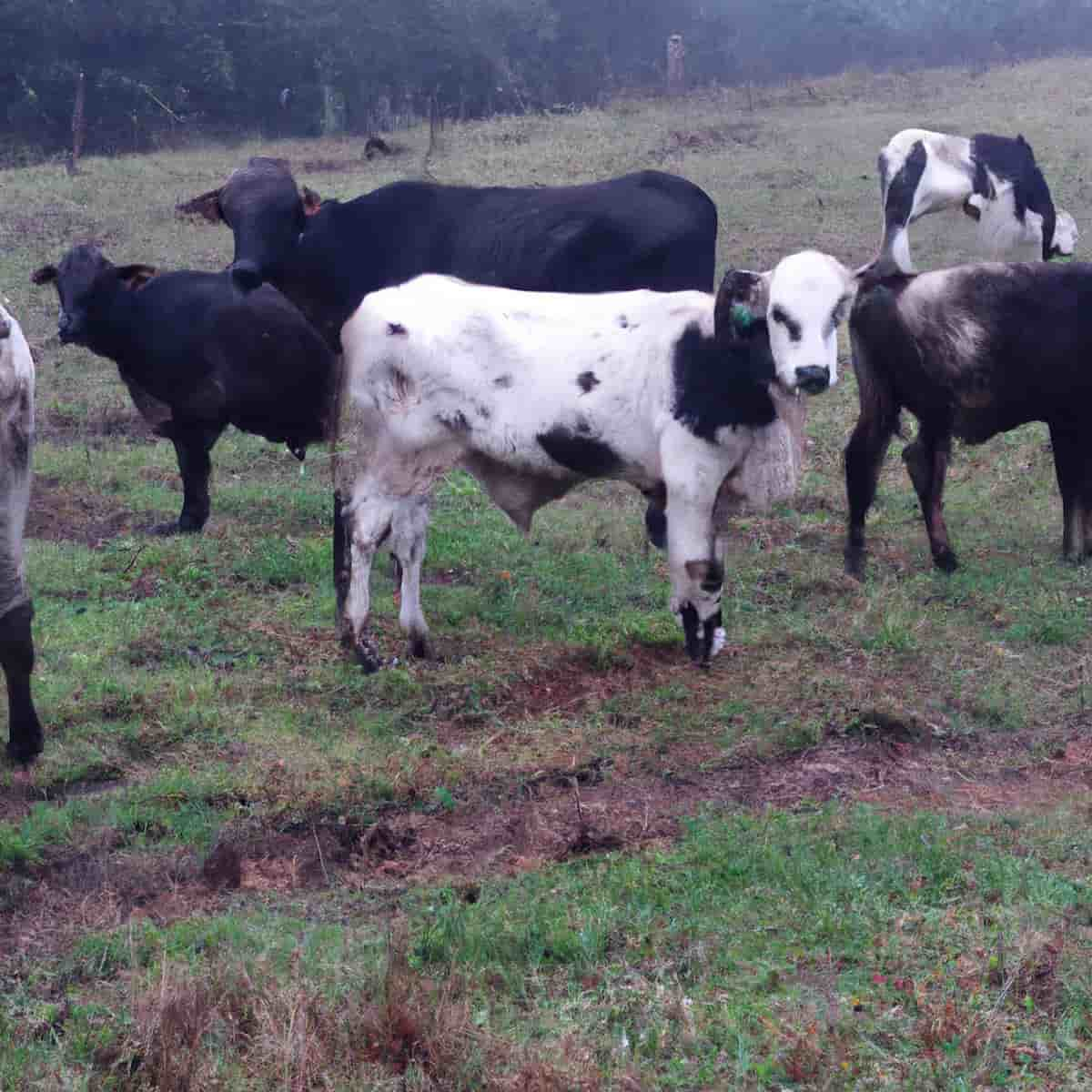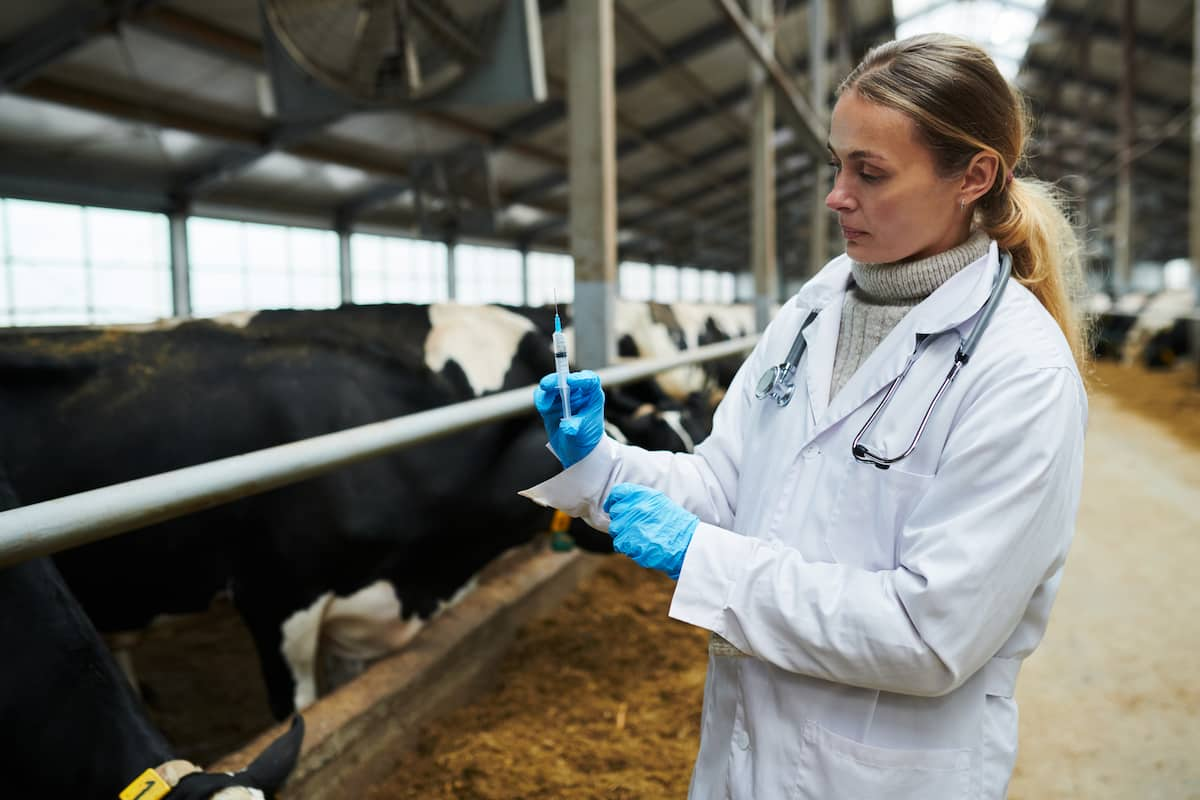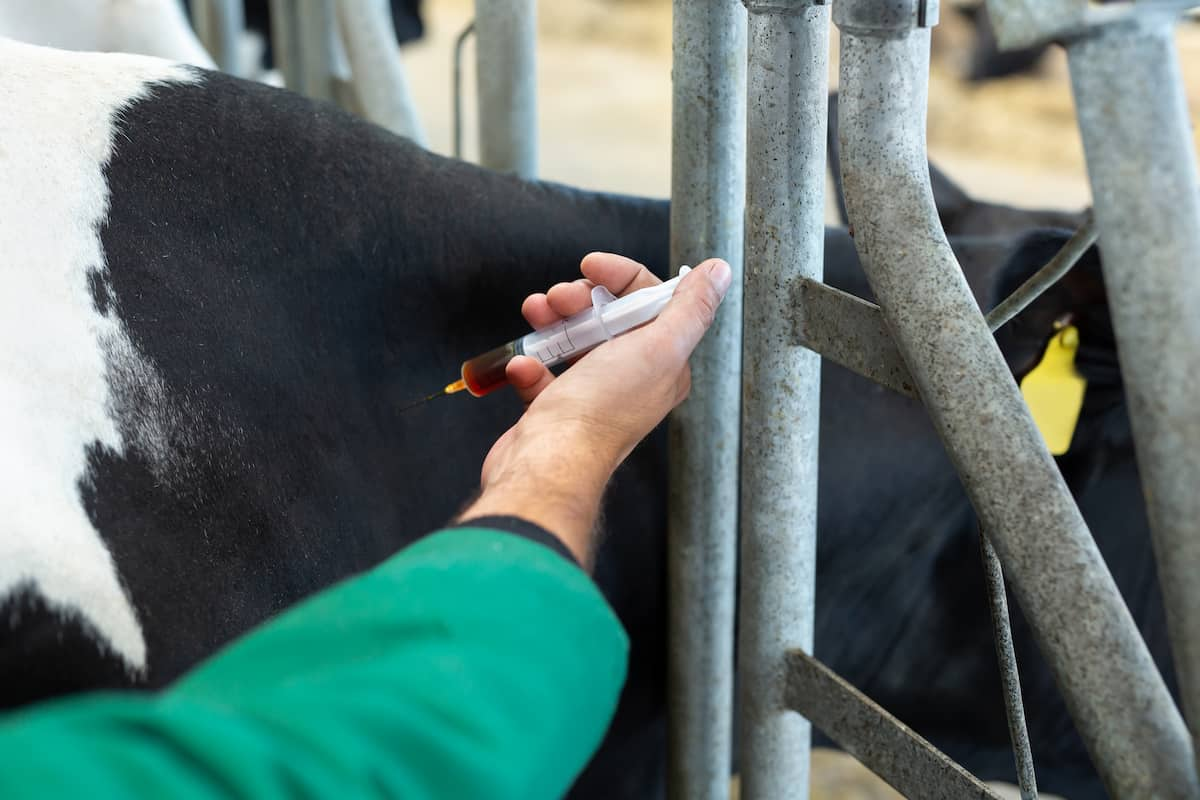Black quarter, also known as a black leg, is a serious and often fatal bacterial disease that affects cattle, buffaloes, sheep, and goats. The Disease primarily affects young animals between 6-24 months of age in good health. It is a soil-borne infection that typically occurs during the rainy season. In India, the disease is usually seen in isolated cases and is caused by the bacterium Clostridium chauvoei.

An acute disease affecting cattle, characterized by muscle swelling, with a milder form in buffaloes. The disease is thought to be spread through the contaminated pasture. The black quarter is a devastating disease that requires prompt attention and management to prevent widespread outbreaks.
Black Quarter Disease Management in Cattle
Causes of Black Quarter (black-Leg) Disease in Cattle
The bacterium Clostridium chauvoei causes black quarter, often called black-leg, a disease of cattle. This gram-positive, rod-shaped bacteria with rounded ends are found in soil and pastures worldwide. Cattle between 6 months and 24 months that are otherwise healthy are particularly vulnerable to this potentially lethal illness.
Disease Cycle of Black Quarter (black-Leg) Disease
Clostridium Organism Transmission
The bacteria that causes Blackleg illness lives in the intestines of animals and may persist in soil for many years. Contaminated pasture is thought to be the cause of the virus, which is likely swallowed by the animal and spreads to other tissues through circulation.
The Spread of Blackleg
The bacteria Clostridium causes Blackleg and may be detected in the spleen, liver, and digestive system of animals. Although the actual origin of bacteria spreading in muscle tissues is unknown, physical stress during transportation, herding, and handling is thought to generate circumstances conducive to bacterial development and tissue injury.
What Are the Symptoms of Black Quarter (black Leg) Disease?
- Sudden fever (107°F to 108°F) with loss of appetite and depression
- Rapid pulse and heart rate, difficulty breathing
- Lameness in the affected leg with crepitating swelling in the hind or fore quarter
- Trembling muscles with violent twitching
- Suspended rumination
- Hot and painful swelling in the loin, buttocks, and sometimes shoulders, chest, and neck
- Cracking sound when the swelling is pressed due to gas accumulation
- Death within 24 to 48 hours, with the swellings becoming cold and painless at the end.
In case you missed it: Fowl Cholera Disease Management in Chicken: Symptoms, Treatment, Diagnosis and Prevention of Disease

Diagnosis of Black Quarter in Cattle
The diagnosis of Black Quarter in cattle can be made based on history, clinical findings, and necropsy examination. A rapid and fatal febrile disease with massive crepitant muscle swellings in young, well-nourished cattle is suggestive of Black Quarter. Laboratory confirmation can be done by examining the causative organism in the affected muscle and using biochemical tests, including the fluorescent antibody test for Clostridium chauvoei.
Treatment and Control of Black Quarter (black-Leg) Disease
In advanced cases, treatment for Blackleg in cattle may not be effective. Still, it can be helpful for animals that are not in a critical state. Large doses of penicillin or oxytetracycline can be administered intramuscularly or directly into the affected muscle.
In some cases, drainage and flushing of the affected tissue can be attempted to improve oxygenation. Supportive treatments such as parenteral fluids and analgesics may also be prescribed. Early treatment has a better chance of leading to a complete cure, so it is important to consult with a veterinarian as soon as possible.
Preventive and Management Measures to Control Black Quarter (black-Leg) Disease
- Hyperimmune serum (HIS) is used to control explosive outbreaks, and penicillin and HIS can be used to treat the disease. Early stages of the disease can also be effectively treated with oxytetracycline and chlortetracycline.
- To prevent the spread, It is important to vaccinate all six months or older cattle annually before the onset of monsoon season in endemic areas.
- Burning the top layer of soil with straw can also help eliminate fragments in endemic areas. Quick lime should be sprinkled over carcasses during burial.
- In the event of an outbreak, prophylactic treatment can reduce its incidence.
- To prevent soil contamination, it is important to destroy carcasses of animals dying from Blackleg by burning or deep burial with quick lime. Known Blackleg contaminated areas should be disinfected using 3% formaldehyde.
Vaccination Schedule for Black Quarter (black-Leg) Disease in Cattle
Protection from Colostrum: Due to the presence of enough colostrum from their mothers within a few hours of birth, calves are protected from Blackleg until 3 to 4 months of age.
Vaccination of Calves: Once the calves are 3 to 4 months old, they become susceptible to the disease. All calves should be vaccinated against Blackleg by four months of age.
Revaccination: To maintain immunity, all cattle should be revaccinated every six months.
Vaccine Types: Formalin-killed, aluminum-precipitated bacterin from a local strain of Clostridium chauvoei is considered most satisfactory for vaccination against Blackleg. Polyvalent vaccines that contain Cl chauvoei, Cl septicum, and Cl novyi can also be used.
In case you missed it: Coccidiosis Disease Management in Chicken: Symptoms, Treatment, Prevention and Management of Disease

Ethnoveterinary Practices for Black Quarter (black-Leg) Disease in Cattle
Ethnoveterinary practices are traditional methods used to treat and prevent diseases in animals. One such practice is the treatment of cattle for Blackleg in May or June each year. To perform this treatment, exudates (juices) from five different plants – thirugukalli (Euphorbia tirucalli), kodikalli (Sareostemma brevistigma), aththi (Ficus racemosa), banyan tree (Ficus bengalensis), and madara (Calotropis gigantea) are collected and mixed with sesame oil and ragi flour.
This mixture is made into a paste, and then a small dot-sized amount of the paste is applied to the groin region of each animal. This treatment can be used for approximately 50 animals.
Impact of Black Quarter (black-Leg) Disease
The impact of black quarter disease on cattle in India is significant, causing rapid death in affected animals and leading to losses for farmers and the cattle industry. The disease spreads rapidly and results in decreased productivity, decreased ability to sell or trade cattle, and increased veterinary costs, affecting the livelihoods of farmers and the development of the cattle industry in India.
Conclusion
Black quarter (black leg) disease in cattle is a dangerous and sometimes deadly ailment that must be treated and prevented immediately. Symptoms include swelling, darkening, and sponginess of muscles. Treatment options include antibiotics and parenteral fluids, while prevention involves annual vaccination and proper disposal of infected carcasses. Effective disease management is crucial for cattle’s health, farmers’ livelihoods, and the cattle industry’s development.
- Types of Fungicides Used in Agriculture
- Common Issues in the Fruit Development Stage of Pomegranate Farming
- Fruit Development Issues in Papaya: Easy Solutions and Treatment
- Soil-Borne Diseases and How to Protect Your Plants
- Practices to Prevent Disease Spread in the Garden
- From Wilted to Thriving: How to Treat Root Rot Naturally in Houseplants
- Natural Remedies to Cure Brown Spots on Fig Tree Leaves
- Natural Solutions for Poinsettia Problems: 100% Effective Remedies
- How to Control Calla Lily Problems: Natural Remedies for Leaf and Flower Problems